A student pilot takes over solo control, while the instructor is close by with the throttle control, ready to grab the handle if necessary. Photos by Jess Walls and Raoul Salem.
The easy way
Using RC technology to train CL fliers
By Jess Walls
This is how our Radio Control club in Medford, Ore., trains newcomers to Control-Line flying. The Ringmaster Fly-A-Thon is usually when we get our students because it is a special event and gets advertised.
We use throttle-controlled airplanes! With throttle the type of airplane doesn't matter so much because we can make it fly slowly, giving the students more time to react. Ringmasters can be pretty fast.
This is how we mounted the RC throttle equipment on my well used Ringmaster.
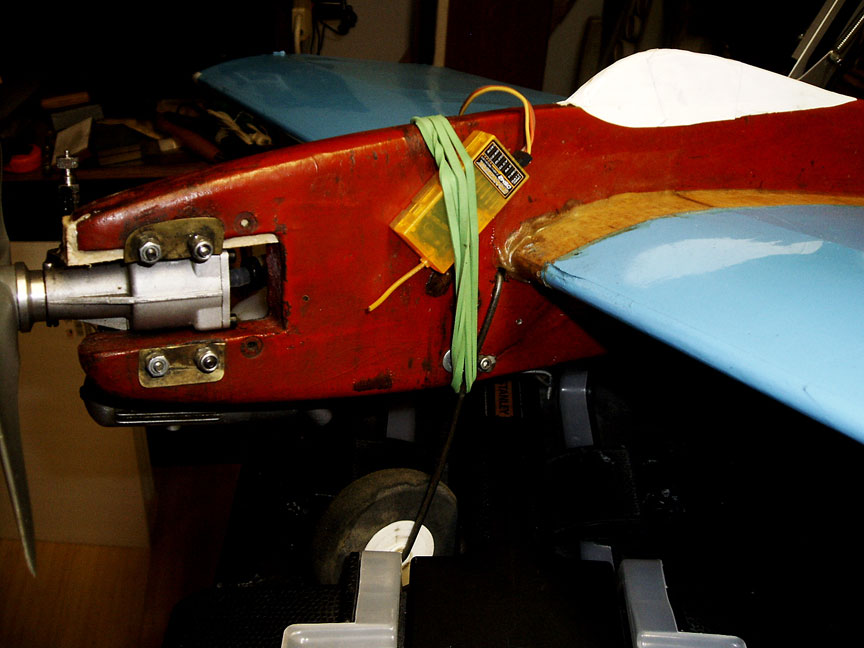
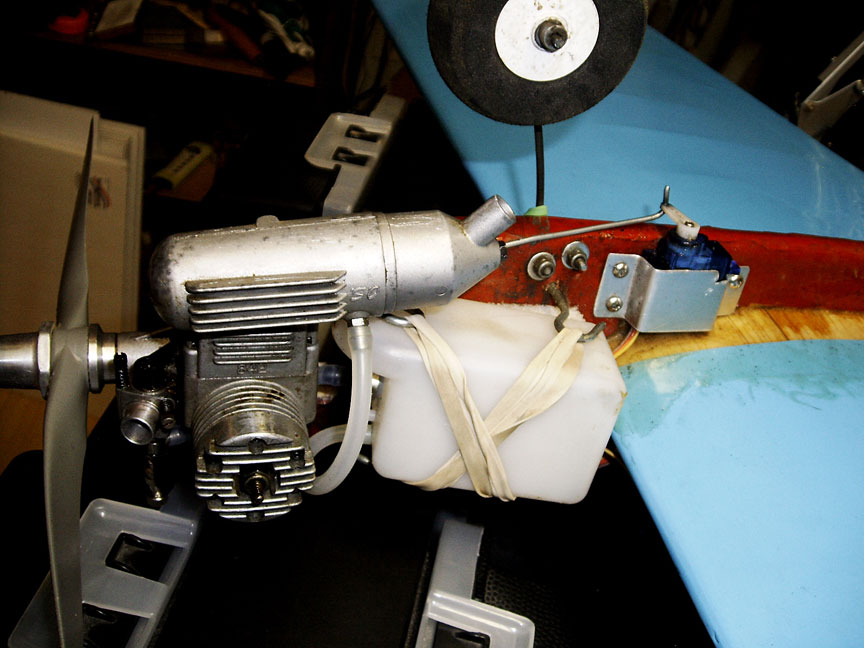
As you can see, the servo was held in place by an aluminum strap and wood screws. We have also used safety wire and rubber bands, but the aluminum strap is pretty tidy and secure. Rx battery goes next to the receiver. Of course if you are using an electric plane all you need is a receiver, battery, and ESC.
Modern stunt planes use a timer to control the flight because competition rules prohibit real-time throttle. We fly mostly for fun and like the ability to take off and land whenever we choose. Flying a few laps slowly or doing “touch and goes” keeps the flying from getting boring, too.
This is the transmitter we use.

These come with the ultra micro helicopters and airplanes from Horizon Hobbies. We like these because they are cheap and light weight. As you can see, we have tied some cord around this one so it will hang around the instructor's neck. This allows the instructor to let go of it, if he needs both hands for some reason, and the transmitter is still within easy reach.
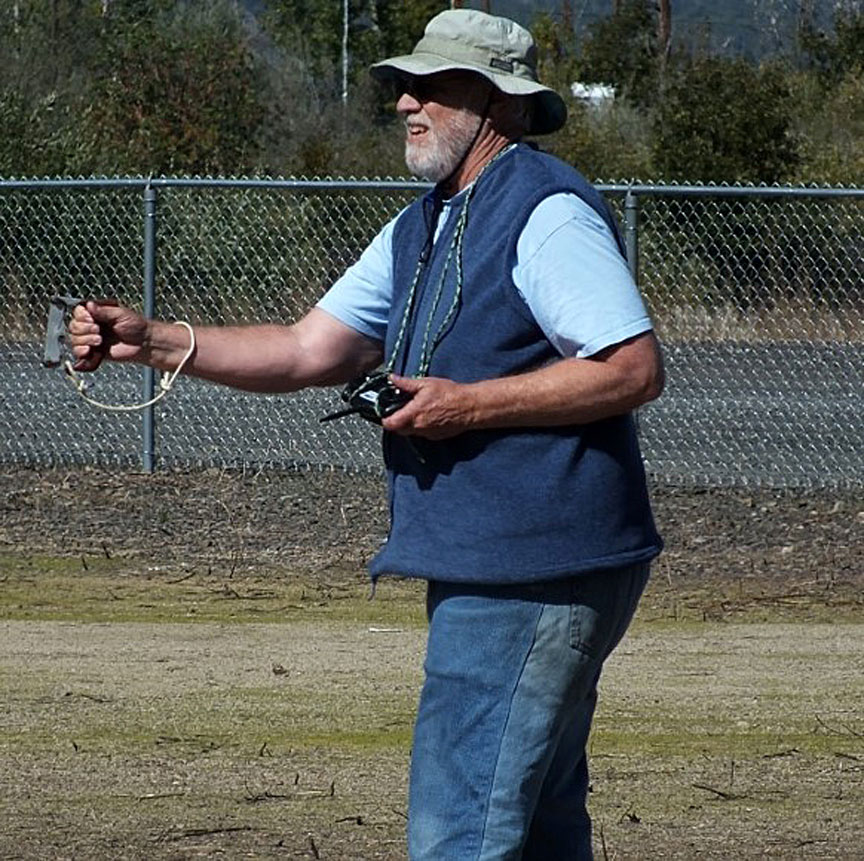
The student holds the handle and the instructor's hand is placed over the student's hand. Left-handers are treated the same, the instructor just has to stand a little closer.
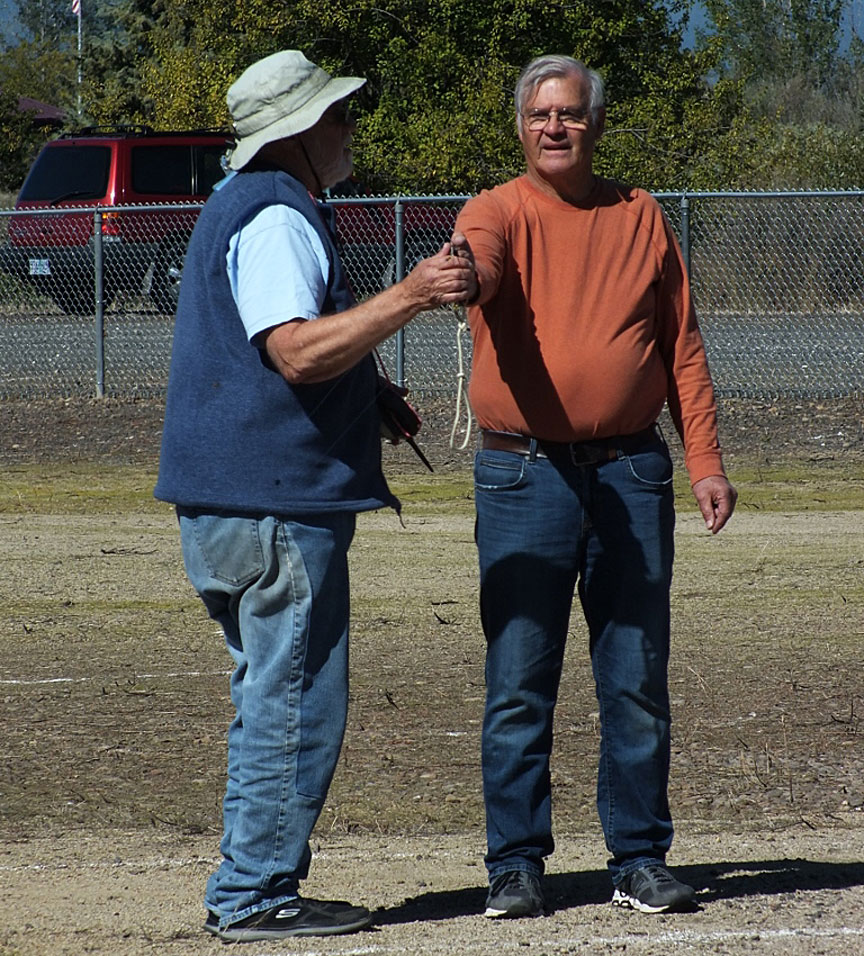
We start with the straight arm -- locked wrist technique. Before the airplane is launched we demonstrate how raising and lowering the entire arm makes the elevator move up and down.
The instructor signals release and the helper steps back. Now we add throttle smoothly and take off. Be prepared for the student to try to take control. They invariably use their wrist (must be human nature).
Be firm but speak calmly. Hold their hand and move their arm up and down slowly to demonstrate again how responsive the airplane is. Remind them to lock their wrist and move their arm up and down to control the airplane.
This only lasts for a lap or two then the student will automatically begin bending at the elbow and will probably add a little wrist action. On the first slow lap we demonstrate how little control is needed to make the airplane respond. After that they are careful about over controlling. Flying at slow speed helps mellow out the airplane's response.
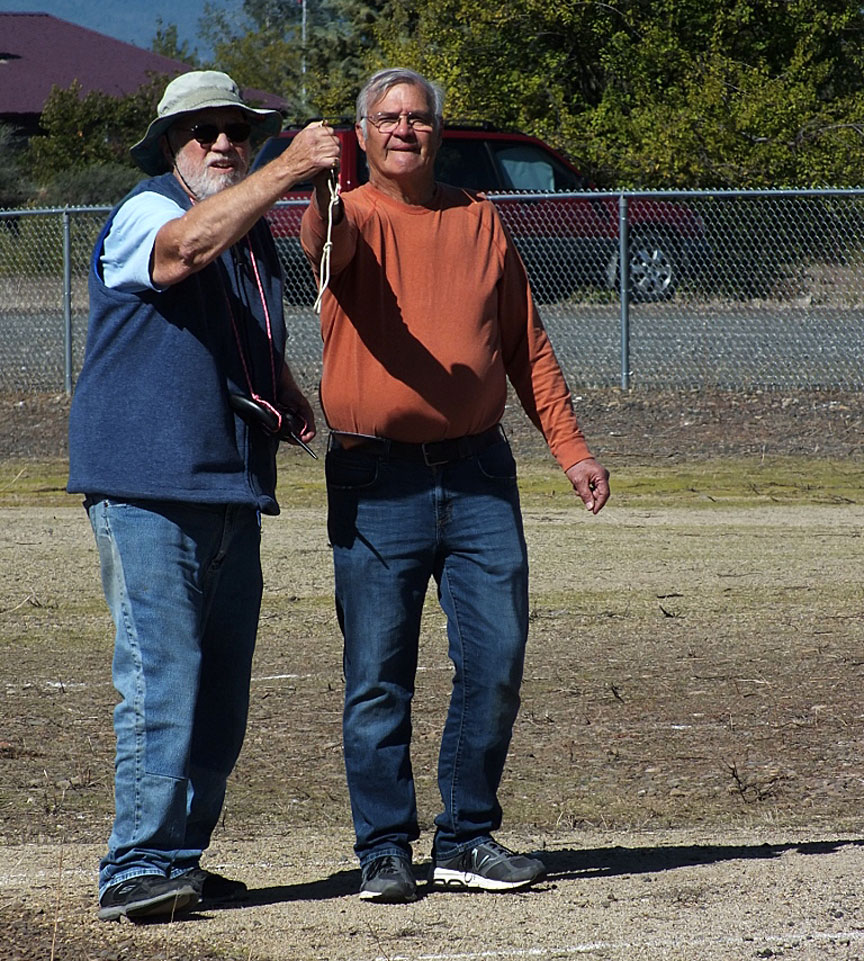
For counter clockwise flying the instructor must stay on the right side of the student. The student will lead and the instructor follows him around in a circle. The student pivots in place and the instructor has to run around him. Another reason for throttle. Running in circles is hard!
Fly as slowly as is comfortable, while maintaining line tension and not making the airplane wallow. About 7-8 second lap time seems good. Slow laps delay dizziness. With throttle we can choose to add some power to prevent slack lines from developing if it is windy.
We fly 3-4 laps then ask how the student is doing. If they are good, we might let go and let them fly solo while still running around in circles next to them. (Top photo) Keep your hand close in case they panic! Then after another lap or two we hold the top and bottom of the handle with one hand and tell them to let go. It sometimes takes a lap to convince them it is OK to let go. Then they stagger around and can usually be persuaded to sit or squat down out of the way. You may still have to walk around them in a circle to keep them clear of the lines.
I clear out the engine with a burst of throttle and land. We chat briefly, shake hands and the next student walks out. The engine is hopefully still idling and ready to go. Throttle makes it possible.
Most of the time 5-6 laps is plenty. They will claim they are fine and may want to continue flying but usually find when they stop that they are surprisingly dizzy. Better to do short flights in the beginning. It may take several sessions to eliminate the dizziness from being a major factor.
For intermediate students, or returning Control-Line pilots who haven't flown in a couple of decades, I just sit on the ground close by and run the throttle for them. They can tell me to add throttle to go faster, or that they are going too fast and for me to throttle back. If they start to get wobbly from dizziness I can “jump up” and take control if necessary or even better, throttle back and they can land themselves.
This should be enough to get a student hooked if they are at all interested. At the least they will experience the “FEEL” of controlling an airplane rather than the video game experience of RC flying. Not that I don't do both, but they are different experiences.
I hope this helps get more people flying Control-Line.
Flying Lines home page
This page was upated Nov. 5, 2019

